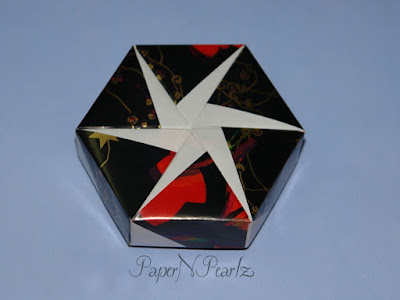Tomoko Fuse's spirals has always fascinated me. And since my last Tomoko Fuse origami was
this pyramid box in May, I figured I would try out another of her spirals origami.
This origami spiral cube has been on my to-do list for quite a few years now! And finally I managed to do it! The cube is made from strips cut out of A4 paper. Each A4 sheet is cut into 4 strips. A total of 12 such strips are needed, which means 3 A4 sheets will be required.
As with most of Tomoko Fuse's models, the individual modules are fairly easy to fold. Assembly is a lot more challenging. I assembled the first three faces, on a flat surface. And I admit, I glued the tips of the spiral so that it didn't unravel easily. Once the three faces was done, the fourth face was decidedly more difficult but manageable. Then the top and bottom of the cube. Assembling one of the 2 ends was easy, because I could insert my hand inside the cube to hold the arms of the spiral and then continue with the assembly. The true challenge was, as always, in finishing the final face. I didn't have proper support, which meant I was forming the spiral in air! But finally, with a good deal of patience, I succeeded!
While I am happy with the cube, I find it too big for my taste. Hope to make another one from A5 paper. The principle remains the same. 4 strips from each A5, 12 strips in all.
Model Details:
Model: Spiral Cube
Creator: Tomoko Fuse
Book: Let's Fold Spirals
Author: Tomoko Fuse
Difficulty Level: High Intermediate
Paper Ratio: Rectangle
Paper Size: 11.7 inches * 2 inches
Model Size: ~3.5 inches across
Number of Modules: 12
Tutorial: kusuda.ru




































